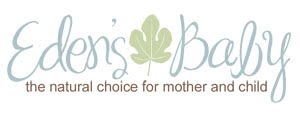I have to admit my journey to cloth was not my first choice. When my Grandmother told me I should use cloth diapers I turned my nose up. I was proud to buy the most expensive disposable diaper on the market, Pampers Swaddlers and Cruisers. After all I would give my children only the best! Things went fine for a while. We had rashes, but nothing out of the ordinary. Then seven months into diapering my son he developed a rash. This one was different; it would not go away. I called Pampers and asked if something had changed and was told nothing had. In fact they sent me coupons for being a loyal customer. Of course that made me happy; diapers are expensive! After a couple of weeks with out any let up I took him to the doctor. I was given some creams to try. None worked. We made trips to the doctor every week for two months and still nothing helped. In the end he had huge bleeding blisters all over his diaper area. I felt like a horrible mom, my son was suffering and I didn't know what to do. Then I met Christina. She showed me a cloth diaper she used on her son. It was really cute! It was a Bumkins vented cover.
That night I went home and began looking into cloth diapers. I was overwhelmed. There were so many options and it seemed really expensive. Most of the diapers I liked were about $18 each. That seemed crazy to me. Now that I see how long they last and how much use you get out of them I would happily pay more. I started with prefolds and covers that I had borrowed from a friend. Within one week his rash was gone! I was hooked and knew I needed to let others know about cloth diapers. Gone were the days of pins and dunking, cloth too had become modern.
Cloth Diaper Myths and Facts
Myth: Disposable diapers were developed to offer babies benefits that cloth diapers could not meet.
Fact: Cloth diapers come in many different forms. There are flat diapers that wash easily and travel well. Prefolds, fitteds and contours that fit nicely inside a diaper cover. All in one diapers, pocket cloth diapers and one size diapers that go on like a disposable diaper. Pocket diapers have a super soft fleece or micro suede that keeps baby's skin dry by wicking moisture away. There is a study that claims that cloth diapered babies have a 7% incidence of diaper rash while disposable diapered babies have a 78% incidence of diaper rash. The elastic at the back and legs of a cloth diaper hold in leaks far better than a disposable diaper can. This prevents blow outs and leaks from occurring.
My Facts: As mentioned above once we switched to cloth diapers our children became virtually rash free. On occasion they may have an out break. This is typically caused by an allergy and is cleared up within a day without the use of creams. Other times they may develop a rash from a detergent I am testing. Once we get back to our normal wash routine their bottoms are clear. Having used disposable diapers I know first hand about blow outs. They happened a lot with my son. Since making the switch to cloth diapers we have been blow out free, even during a diarrhea episode!
You can see the leg gussets and elastic used to contain messes in this Thirsties Diaper Cover.
Myth: Cloth diapers and disposable diapers have the same environmental impact.
Fact: The fact is the energy, water and resources it takes to make disposable diapers far out weighs the impact of using sustainable cloth diapers; even if you take into consideration the washing and drying of cloth diapers over a two to three year period. Disposable diapers generate sixty times more solid waste and use twenty times more raw materials, like crude oil and wood pulp. The manufacture and use of disposable diapers amounts to 2.3 times more water wasted than cloth. Over 300 pounds of wood, 50 pounds of petroleum feedstocks and 20 pounds of chlorine are used to produce disposable diapers for one baby EACH YEAR. Disposable diapers are the third largest single consumer item in landfills, and represent about 4% of solid waste. In a house with a child in diapers, disposables make up 50% of household waste. In 1988, over 18 billion diapers were sold and consumed in the United States that year. Based on our calculations, we estimate that 27.4 billion disposable diapers are consumed every year in the U.S. In 1988, nearly $300 million dollars were spent annually just to discard disposable diapers, whereas cotton diapers are reused 50 to 200 times before being turned into rags.
My Facts: We have had anywhere between 13 and 34 cloth diapers at a time. These diapers are used for over two years before some become so thread bare they needed to be thrown out or used as rags. My daughter, Sophia has diapers that have been used by her brother, three of her cousins and some are back in our baby box for the next child. We wash our diapers in a front loader using much less water than a top loader does. I do typically dry diapers in my dryer, but do hang dry on occasion saving even more energy. I am proud of the fact that our store, Eden's Baby uses as little packaging as possible to display our diapers. We do not have diapers wrapped in plastic. Most cloth diapering families will make two or three trips to our store to purchase their cloth diaper stash that will last them over two years compared with disposable diaper families who have to make weekly trips to buy diapers. This reduces the use of gas and cuts down on air pollution.
Myth: Sustainable cloth diapers can not be used if my baby sleeps 8-12 hours at night.
Fact: While it is true that cloth can only absorb a given amount, their are many excellent options available for diapering a child at night. One of the most common is to use a wool cover. Wool makes an excellent diaper cover because it is very breathable, antibacterial and waterproof. Wool of course is made with renewable resources.
This is a work in progress please check back soon for more myths and facts about cloth diapers.











